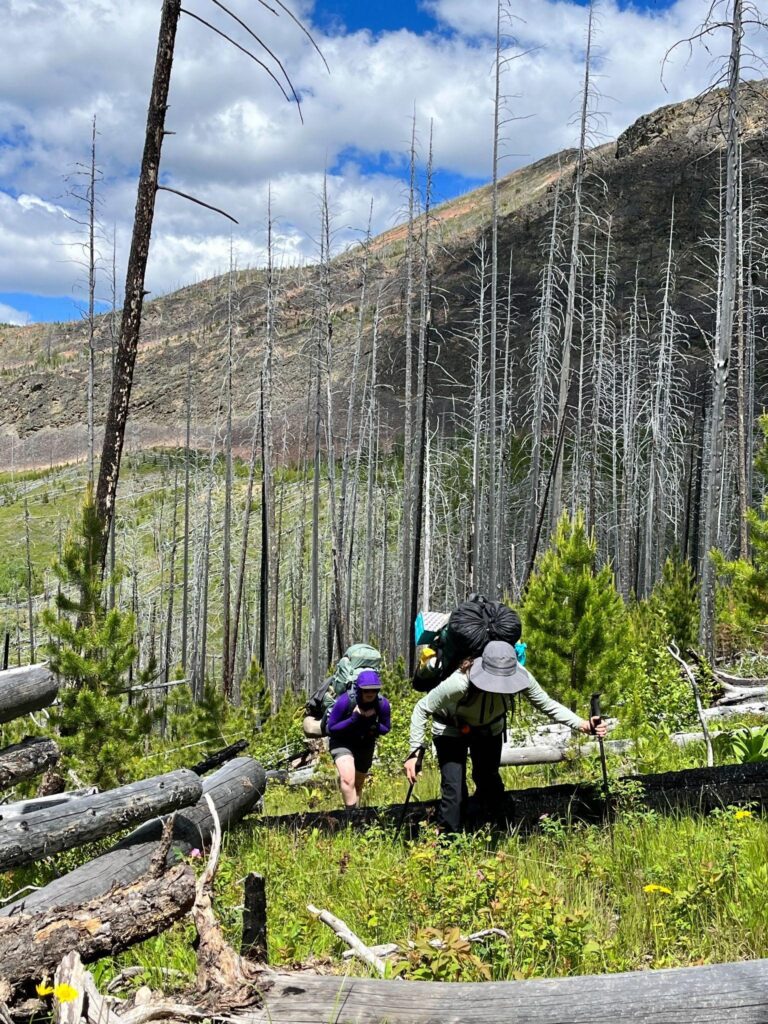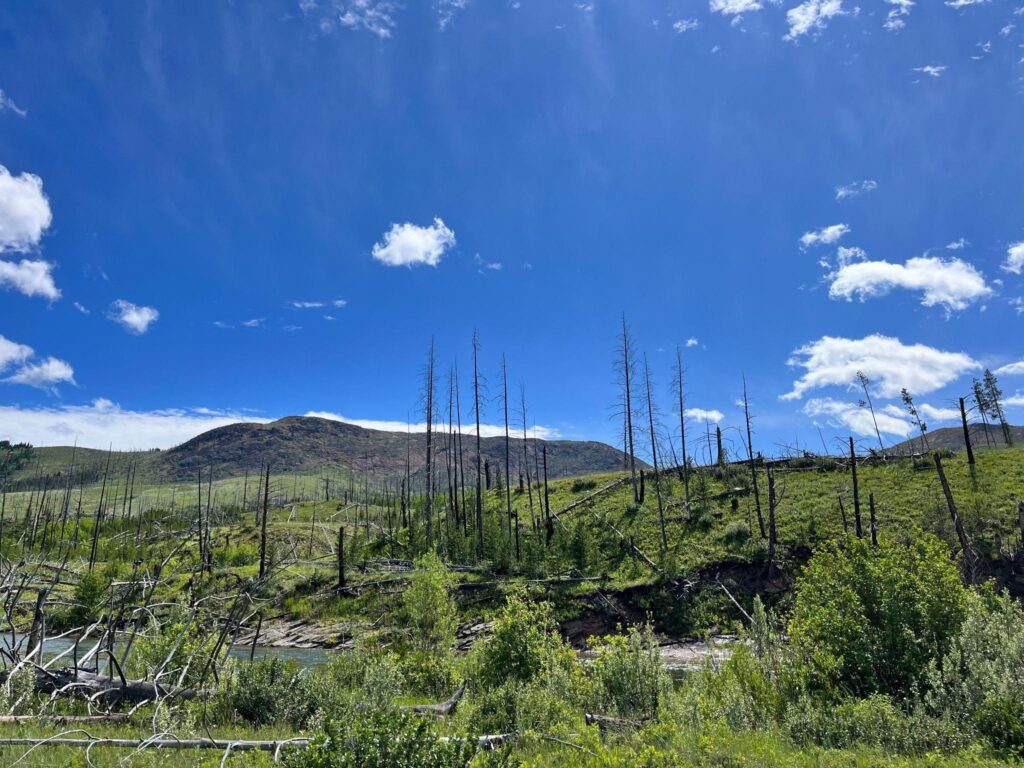As we trekked into the Bob Marshall Wilderness Area on the South Fork of Sun River Trail, dead, burnt trees were scattered across the landscape. Clearly, a high-severity fire had burned through – leaving behind the skeleton of a forest that once was.

The common assumption is that the presence of high-severity fire (i.e., a fire that causes over 70 percent mortality) would wreak havoc on the subalpine mixed-conifer ecosystem that we were camping in and around. However, this is not the case; high-severity fires are consistent with natural disturbance regimes that are often necessary for some flora and fauna to thrive. In fact, as we traveled along the trail, we took note of the tree species that successfully regenerated after the fire. Stands with mostly lodgepole pine (Pinus Contorta) and some Douglas-fir (Pseudotsuga menziesii) sprinkled throughout seem to either survive the fire or favor the post-fire conditions.
Detouring from the trail, our class ended up taking a closer look at some of the trees that had sprouted after the fire. We used tree dating methods–specifically, counting the annual growth rings of a young lodgepole pine – to determine that the most recent fire burned in 2007. More importantly, we learned that lodgepole pine are fire-adapted. In fact, they rely on fire to regenerate because their cones are serotinous, meaning they are closed and encased in a wax that melts and releases seeds in extremely high heat. In this way the lodgepole pine can quickly populate an area before any other species have a chance, often resulting in the homogenous stands that we would repeatedly see as we backpacked between campsites. Near these lodgepole pines were other saplings regenerating after the fire, specifically Douglas-fir. Although they do not rely on fire to release their seeds, Douglas-fir has thick enough bark to protect the more vulnerable, living tissue – increasing their overall chance of survival, thus quickly seeding the burned area.
Yet, even still, it’s hard to imagine an ecosystem that requires or benefits from such high-severity fire – especially when, in the media, we hear about larger mega- and giga-fires that we have seen within the last few years in California and elsewhere. However, many of those destructive fires have burned because of the exclusion of fire (i.e., with both prevention and almost immediate suppression). We know this sounds counterintuitive but policy, public perception of fire, and successful campaigns such as Smokey Bear have allowed for flammable fuel loads to accumulate in places that have historically burned. And, it is becoming increasingly difficult to allow fire to freely burn as humans continue to develop in these landscapes. Not only that, but management of these fires also greatly differs between public and private lands. Luckily, in those federally managed places with a protected status such as the Bob Marshall Wilderness Area (where we are), natural fire regimes are permitted. Not only that, but indigenous peoples have been using fire to their advantage since time immemorial in order to shape the landscapes we know. Indigenously set fires, termed ‘cultural burning’, was historically used to manage fuel loads and promote productivity in the environment (e.g., creating ideal habitats for ungulates). However, settler-colonialism and Indigenous erasure effectively removed cultural burning and a new cultural fear of fire began to inform management.
Today, in places where human-caused climate change, insects, disease, and fire suppression exacerbate the negative effects of wildfire, fuel treatment in the form of prescribed fire may help to restore the ecosystem to a more balanced state. In fact, many landscapes that we see today (i.e., at least, many that require fire), evolved with anthropogenic fire regimes. Thus, from a management or policy perspective, it is important to consider ways we might permit both wildfire and reintroduced prescribed and cultural burning in collaborative management with tribes.
